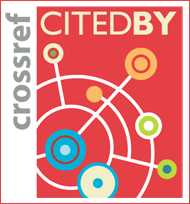ISSN : 1226-7155(Print)
ISSN : 2287-6618(Online)
ISSN : 2287-6618(Online)
Identification of Anthocyanin from The Extract of Soybean Seedcoat
(received March 9, 2011 ; revised June 1, 2011 ; accepted June 10, 2011)
Abstract
Anthocyanins are naturally occuring phytochemicals andthe main components of the coloring of plants, flowers andfruits. They are known to elicit antioxidative, anti-inflammatoryand cancer preventive activity. In this study, we investigatedanthocyanins in black / yellow soybean seedcoats usingdifferent methods of detection - thin layer chromatography(TLC), capillary zone electrophoresis (CZE) and HPLC analysis.The anthocyanins in soybean seedcoats were extractedby five independent methods of extraction and the aglycons(anthocyanidins) of the corresponding anthocyanins wereprepared by acid mediated hydrolysis. The anthocyanin /anthocyanidin in black soybean seedcoat showed characteristicTLC mobility, CZE electrophoretic retention andHPLC migration time while little of anthocyanins weredetected from yellow soybean seedcoat. The extractedanthocyanins showed pH dependent retention time in CZEand spectral change in UV-Vis spectrum. HPLC analysis ofthe hydrolyzed extract of black soybean seedcoat identifiedthe presence of four anthocyanidins. The major anthocyaninin black soybean seedcoat was cyanin (cyanidin-3-O-glucoside),with the relative order of anthocyanidin in cyanidin >delphinidin > petunidin > pelargonidin.
- 36-2-6.pdf1.66MB









